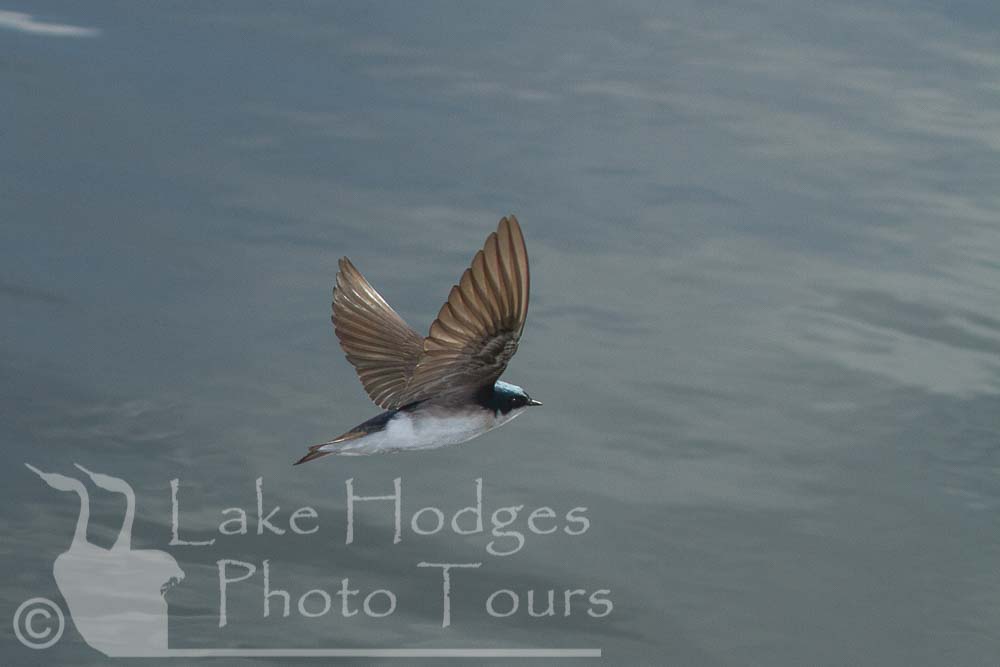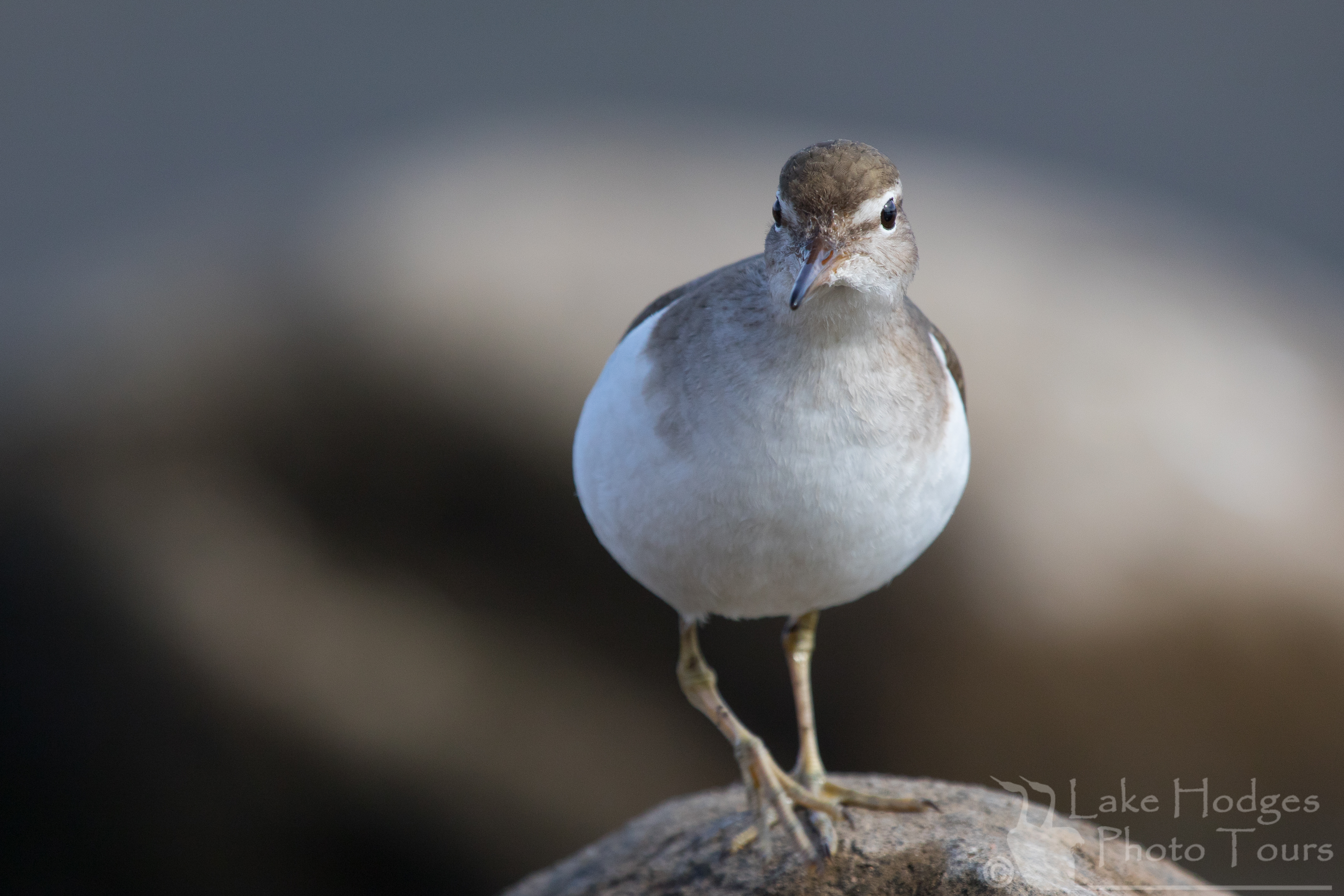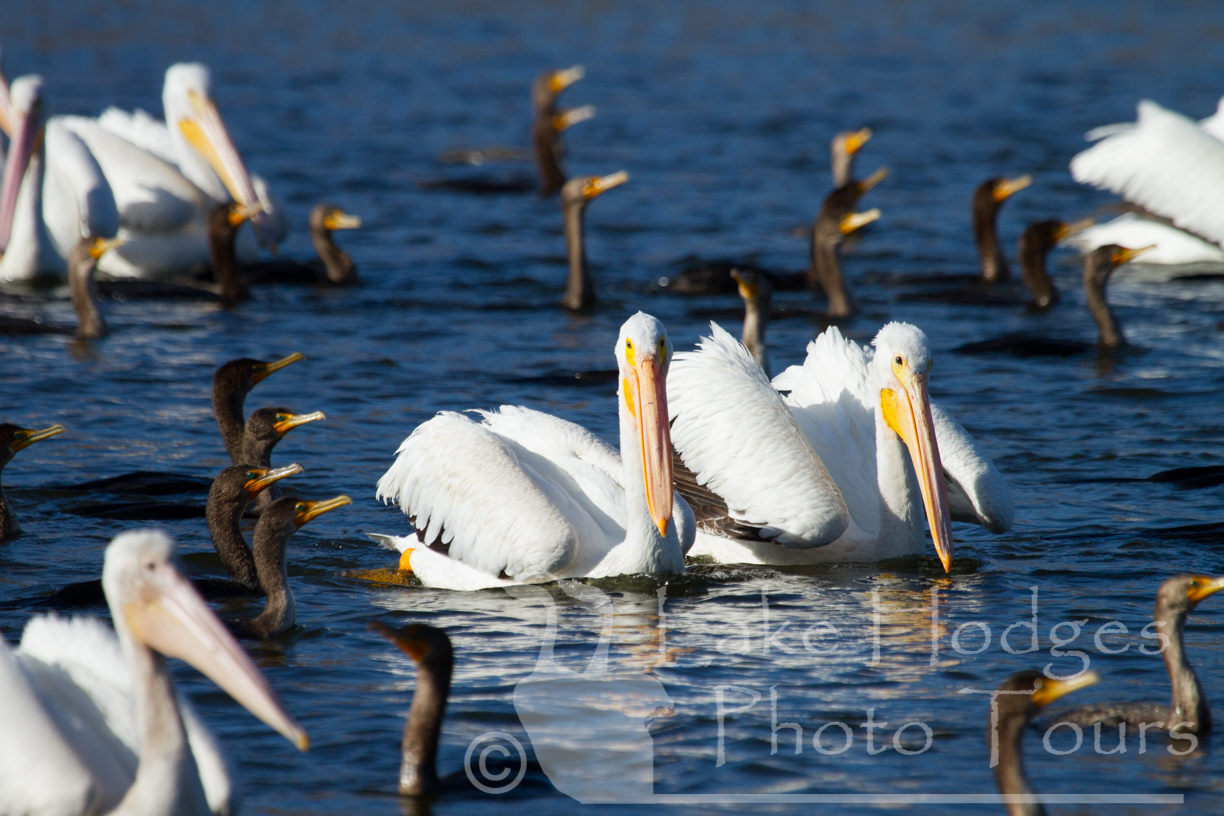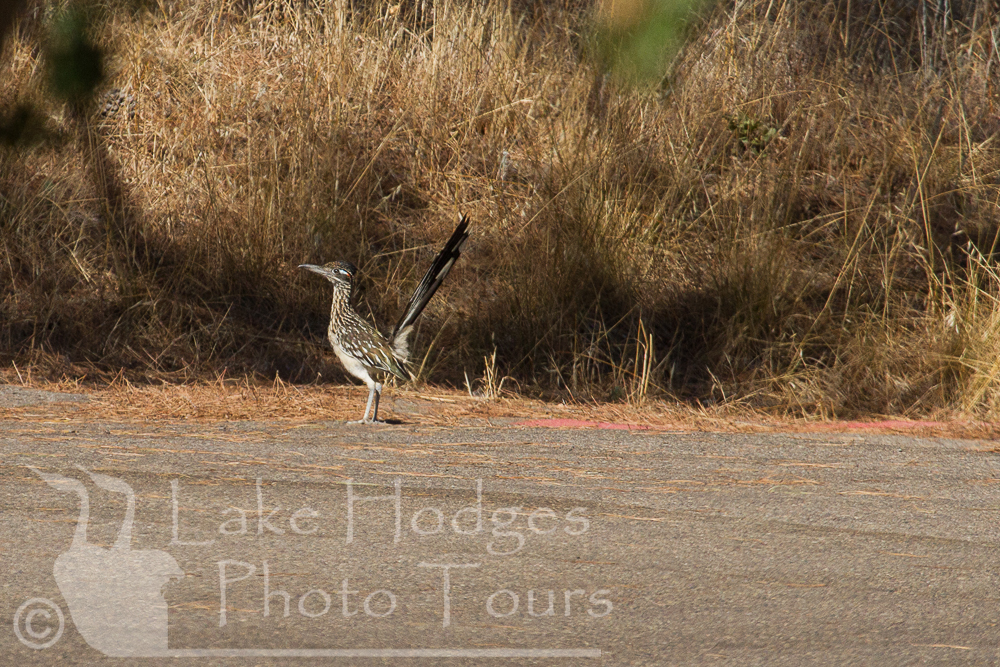Wildlife Habitats
Plant Communities
The hillsides and valleys around Lake Hodges are dominated by a coastal sage scrub plant community. Coastal sage scrub consists mostly of low-growing, aromatic and generally soft-leaved shrubs. The coastal sage scrub dominates south-and west-facing slopes below about 1,000 feet in elevation. Dominant species include California sage, black sage, bladder-pod sage, flat-topped buckwheat, saw-toothed goldenbush, and San Diego sunflower.
Mixed chaparral plant communities occur on the higher north- and east-facing slopes that tend to remain cooler and retain moisture longer.
Oak woodlands occur locally on cooler north-facing slopes and along ravines. Five species of southern California oaks include coast live oak, interior live oak, California black oak, canyon live oak, and California scrub oak.
Riparian habitat occurs along stream valley areas and the artificial shoreline habitat, as well as within the bathtub ring around Lake Hodges. Dominant plants in the riparian settings include oaks, sycamores, willows and rush beds. Freshwater marsh habitat locally occurs where principal streams drain into the river floodplain at the east end of the lake near the Interstate 15 bridges area.
The Lake Hodges habitat collection would best be described as desert transition. Prickly pear cactus and Mexican yucca-dominate some of the dryer slope areas.
San Diego County is a biodiversity hotspot. Although the county makes up only 2.7% of California’s land area, it contains almost 34% of the plant species recorded in state. San Diego County is also home to 744 species of mammals, and almost over 500 species of birds, over 80 species of reptiles, and 15 species of amphibians. A total of 247 unique species of birds have been documented around Lake Hodges.
Wildlife Communities
Lake Hodges has four basic wildlife communities, which are influenced by their immediate habitats.
Subsurface The lake has very healthy populations of fish including near record-sized largemouth bass, crappie, bluegill, channel catfish, bullhead and carp. The lake is actually a reservoir, not a natural lake, so most of these species were probably planted there many years ago. They have naturalized and reproduce very successfully.
Aquatic Birds The highly productive fish community provides a great deal of food for aquatic birds. These include resident birds such as Western grebes, Clark’s grebes, and double-crested cormorants who dive and swim underwater to hunt; great blue jerons, great and snowy egrets, and black-crowned night herons who hunt fish and other small prey from the shoreline; bald eagles, osprey, and Forster’s terns who hunt fish by plunging in from the air; and generalists such as mallards and American coots who dabble and hunt along the water’s edge to satisfy an omnivorous diet of algae, insects, and mollusks.
In addition to the resident birds, many aquatic birds call Lake Hodges home during part of the year. Some, such as eared, pied-billed, and American white pelicans come for the winter. Others, such as ruddy ducks come to breed.




Riparian/Marsh Dwellers Most of the ground around the eastern end of the lake is gently sloped or is river or creek bottomland. The shape of the land extends under the lake as well, so the entire east end tends to be shallow and/or marshy with lots of willows and rushes growing in or adjacent to the water. And while some of the shoreline of Lake Hodges is steep and rocky, it is punctuated by small coves at the bottom of arroyos which collect runoff silt, creating small marshy niches all around the western half of the lake.
The small marshy areas around these steeper parts of the lakeshore sport rush beds, which have been expanding consistently since the water level was stabilized in 2019. The species using these for foraging or nesting include Red-winged Blackbirds, Great-tailed Grackles, American Coots, Song Sparrows, Common Yellowthroats, and Mallards.
Most of the shoreline aquatic birds already mentioned also inhabit the marsh areas. During the winter, the marshy and shallow east end of the lake supports large flocks of various duck species, American White Pelicans, various shorebird and sandpiper species, sometimes large flocks of Black-necked Stilts, and the occasional Avocet or White-faced Ibis. Many songbirds nest in willows and other trees and shrubs in this area.
The most well-known nesting birds to be found in the shallow eastern end of the lake are the Western Grebes and Clark’s Grebes. These birds build floating nests which are anchored to vegetation growing in the water. And they nest in the hundreds at Lake Hodges. Fluctuating water levels can sometimes make it impossible for the parents to enter the nest, resulting in nest failure. There is currently much controversy over the effects of the nightly pumping between Lake Hodges and Olivenhain reservoir because it can change the water level by anywhere from a few inches to over a foot in one night.
Chaparral The lake and this surrounding land were recognized by the Audubon Society as a Globally Important Bird Area in 1999 and the National Geographic Society has called it a “key bird watching site”. Many of those birds are here for the habitat which is incidentally protected by the presence and management of the lake but are not aquatic birds themselves. Endangered California Gnatcatchers and Cactus Wrens are among these birds as are many others.
Lake Hodges provides water for many of the animal species in the surrounding chaparral as well as mitigating the temperatures and somewhat increasing the humidity in the area.
Coyotes, mule deer, bobcats, raccoons, gophers and many other small mammals are common here. Mountain Lions have been sighted nearby and likely came out of the wildland surrounding the lake. Snakes that can be found here include the San Diego gopher snake, California king snake, rosy boa, Southern Pacific rattlesnake, red diamond rattlesnake, and others. It is a very good place for snakes and it is possible to find specimens that reach the maximum sizes for their species here. Other lizards present include San Diego alligator lizards, San Diego horned lizards, fence lizards, and various other lizards, and skinks. Frogs are found in the wetlands surrounding the lakes and in the arroyos of the uplands.

